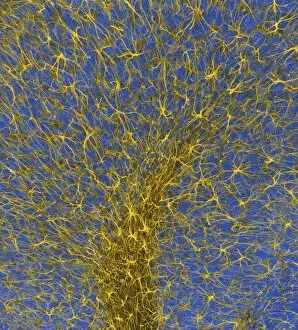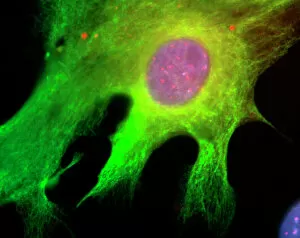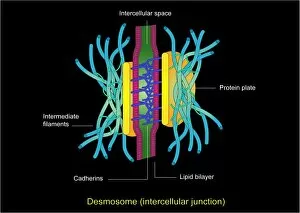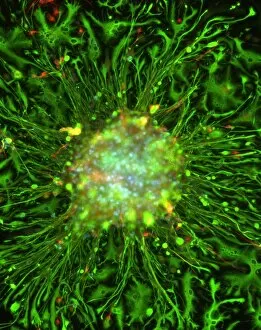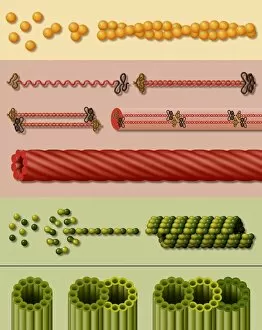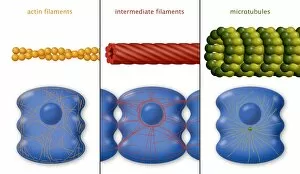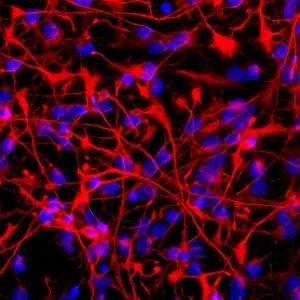Intermediate Filament Collection
"Exploring the Intricate World of Intermediate Filaments: Unveiling the Structural Backbone of Glial Cells" In this captivating confocal light micrograph
For sale as Licensed Images
Choose your image, Select your licence and Download the media
"Exploring the Intricate World of Intermediate Filaments: Unveiling the Structural Backbone of Glial Cells" In this captivating confocal light micrograph, we delve into the mesmerizing realm of intermediate filaments, a crucial component of glial cells. These specialized cells, known as astrocytes, play an essential role in supporting and nourishing nerve cells within our intricate neural networks. The image showcases the remarkable complexity and beauty found within these astrocyte nerve cells. Their delicate yet resilient structure is highlighted by their numerous branches extending like ethereal tendrils throughout the micrograph. It serves as a testament to their vital function in maintaining neuronal health and promoting efficient communication between brain regions. Furthermore, this visual journey takes us beyond individual astrocytes to explore neurosphere cultures—a fascinating glimpse into nerve cell growth under controlled laboratory conditions. The vibrant clusters of interconnected astrocyte nerve cells demonstrate their ability to form complex networks that support neural development and regeneration. As we zoom closer into this microscopic world, we uncover another layer—the cytoskeleton components that make up intermediate filaments. Through stunning artwork and detailed diagrams, we gain insight into how these filamentous proteins provide structural stability to not only astrocytes but also other cell types across various tissues. Moreover, our exploration wouldn't be complete without acknowledging desmosome cell junctions—an artistic representation showcasing how intermediate filaments contribute to cellular adhesion and tissue integrity. This intricate web-like network ensures that neighboring cells remain tightly connected while allowing for flexibility during physiological processes such as tissue stretching or contraction. Finally, we encounter neural stem cells thriving in culture—another testament to the versatility of intermediate filaments in differentiating and guiding cellular fate. These multipotent progenitors hold immense potential for regenerative medicine applications due to their ability to generate diverse specialized cell types within the nervous system. This captivating collection of images provides a glimpse into the awe-inspiring world of intermediate filaments.

